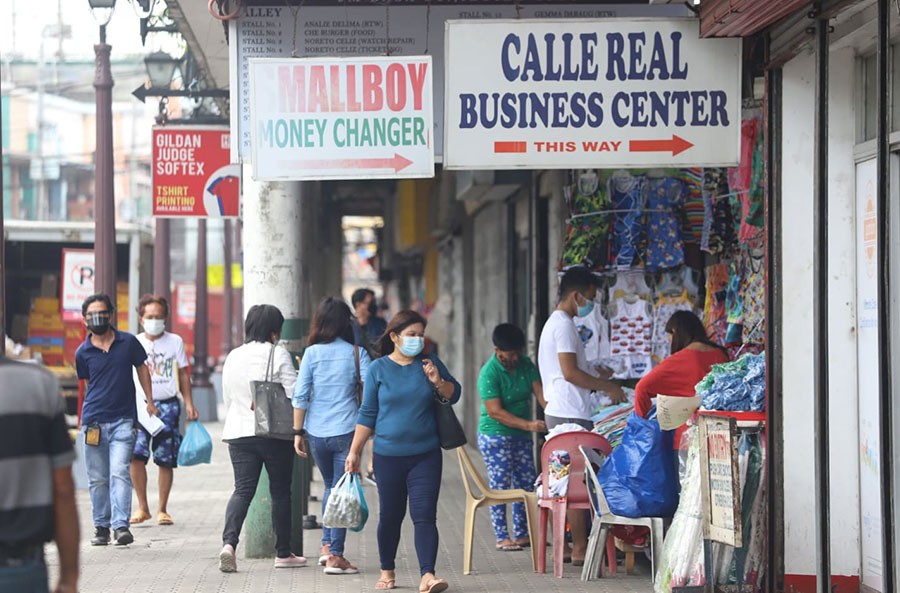
By Joseph B.A. Marzan
Western Visayas’ employment rate increased in April 2021, while underemployment remained steady after drastically rising in previous months, according to the latest data from the Labor Force Survey (LFS) released by the Philippine Statistics Authority (PSA) on June 8.
The PSA surveyed 44,344 eligible sample households across the country, with members aged 15 years and older, using population projections based on the 2015 Population Census.
The Labor Force Participation Rate (LFPR) in Western Visayas went down slightly by 0.9 percent to 61.7 percent from 62.6 percent (January 2021), but still higher than April 2020 (56.1 percent).
The country’s LFPR is at 63.2 percent, with 47.41 million who are either employed or unemployed, higher than January 2021 (60.5 percent) and April 2020 (55.7 percent).
LFPR refers to the rate of persons 15 years old and over who are either employed or unemployed.
As of April 2021, employment rate in the region rose by 1.6 percent to 92.5 percent from January 2021 (90.9 percent), higher than 86.3 percent in April 2020.
Employed persons are persons 15 years and older who:
– Do any work even for one hour for pay or profit, or work without pay in a farm or business operated by a member of their family;
– Are with a job but not at work because of temporary illness or injury, vacation, or other reasons; and
– Are expected to report for work or start operation of the farm or business within two weeks from enumerators’ visit.
Accordingly, unemployment in the region dipped in April 2021 (7.5 percent), compared to January 2021 (9.1 percent), and the record peak in April 2020 (13.7 percent).
The national unemployment rate returned to 8.7 percent, the same rate as October 2020 and January 2021. It is slightly lower than February 2021 (8.8 percent), higher than March 2021 (7.1 percent), and way lower than the April 2020 record peak of 17.6 percent.
Unemployed persons are those who are 15 years old and above during the reference period. Based on Resolution No. 15 of the National Statistical Coordination Board (NSCB) dated Oct. 20, 2004, they include the following:
– Without work, or had no job or business during the reference period;
– Currently available for work, or available and willing to take up work in paid employment or self-employment during the reference period, or would be available and willing within two weeks after the interview date; and
– Seeking work or taken specific steps to look for a job or establish a business during the reference period, or
– Not seeking work due to the following reasons: (1) fatigued or believed that no work was available; (2) awaiting results of previous job applications; (3) temporary illness or disability; (4) bad weather; or (5) waiting for rehire or job recall.
The “reference period” refers to the past 7 days before the date of the enumerator’s or interviewer’s visit.
In a press release, the PSA said that the dip in the national employment rate in April was primarily due to community quarantine and travel restrictions in the National Capital Region and the neighboring provinces of Bulacan, Cavite, Laguna, and Rizal which began in mid-March 2021.
Underemployment in Region 6 remained somehow steady, rising to 21.6 percent from 21.1 percent (January 2021). The April 2020 underemployment rate was 10.9 percent.
The country’s underemployment rate is at 17.2 percent as of April 2021, also rising slightly from January 2021 (16.0 percent), but lower than that of April 2020 (17.2 percent).
Underemployed persons according to the PSA include those who wish to have more working hours in their present job, or an additional job, or a new job with longer working hours.
John Mandario, Information Officer III of the Department of Labor and Employment (DOLE)-6, told Daily Guardian that the positive movement of the region’s employment rate was due to easing of restrictions which allowed businesses to reopen.
“The opening of businesses in the region during the first quarter is the reason why the unemployment rate went down. If we notice, from January to March, you could see that many can go to restaurants and malls. Opportunities to find a job went up, and when opportunities rise, unemployment will also go down,” Mandario said in a phone interview.
As to the underemployment rate, Mandario said that it was due to the proliferation of flexible work arrangements (FWAs) in many sectors due to the coronavirus disease 2019 (COVID-19) pandemic, including reduction of work hours or workdays, rotation of workers, and forced leave.
“We have FWAs, where instead of 7 days a week, employees work 3 days a week, or instead of 8 hours a day, they follow a shorter schedule, so they can cope with the economic impact of the COVID-19 pandemic,” he said.
Meanwhile, the DOLE-6 will also host its Kalayaan Online Job Fair in celebration of Independence Day (June 12), with 4,256 job vacancies from 25 companies available via http://www.mynimo.com/dole6-jobs.




















